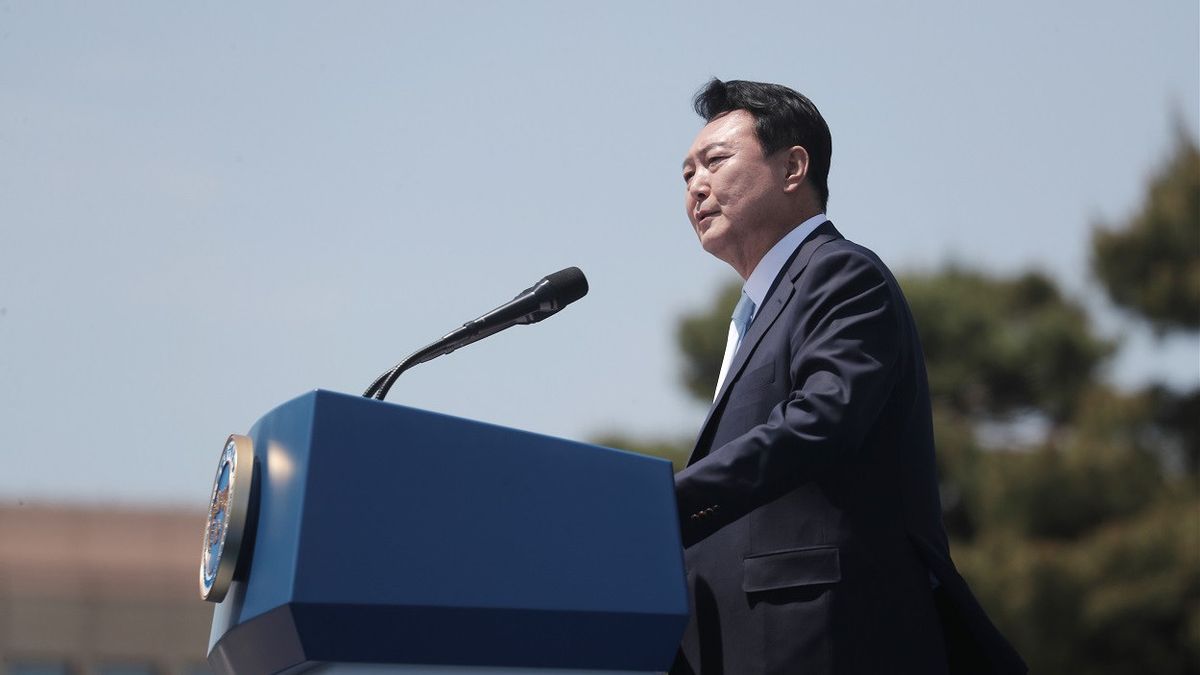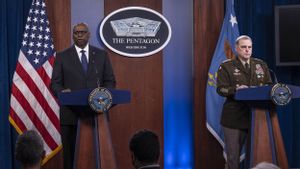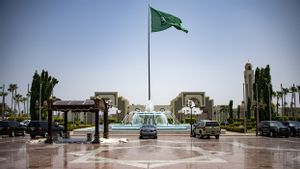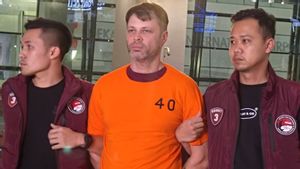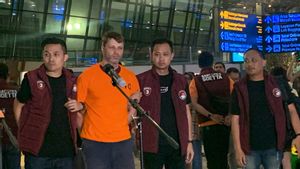JAKARTA - South Korean President Yoon Suk-yeol warned Friday his government would make North Korea "pay dearly for its reckless provocations", vowing to bolster his country's military capabilities in response to Pyongyang's growing nuclear threat.
President Yoon's announcement came hours after Pyongyang launched what it called an underwater nuclear strike drone, implying that Seoul will stick to its stance on Pyongyang.
"North Korea has developed its nuclear weapons while continuing to carry out missile provocations at an unprecedented rate," the president said in a speech at a ceremony marking the eighth West Sea Defense Day at Daejeon National Cemetery.
"Our government and military will drastically strengthen the South Korean-style three-axis system and strengthen security cooperation between South Korea and the United States, as well as between South Korea-United States-Japan, in response to North Korea's growing nuclear threat," he said, stressing that he would make Pyongyang pay the price for his reckless provocation.
The three-axis defense system refers to the Korea Massive Punishment and Retaliation (KMPR), an operational plan to cripple the North Korean leadership in a major conflict, the pre-emptive Kill Chain strike platform, and the Korean Air and Missile Defense (KAMD) system.

President Yoon's hardline approach to North Korea highlighted in his speech contrasted sharply with that of his predecessor Moon Jae-in, who sought rapprochement between the Koreas through dialogue. During his tenure, Moon missed three of the five Defense of the West Seas Day ceremonies.
As part of the incumbent government's moves to increase military capabilities, South Korean and U.S. troops recently held a massive joint exercise called Freedom Shield on a scale not seen since 2017. It ran for 11 consecutive days from March 13 to Thursday.
On the last day of the drills, the military held a fire drill at Pocheon in northern Gyeonggi Province, about 30 kilometers south of the Demilitarized Zone (DMZ) that separates the two Koreas.
North Korea, which views the stepped-up drills as "rehearsals for invasion", has staged the protests through a series of weapons tests.
The Korean Central News Agency (KCNA), North Korea's official news agency, on Friday reported that Pyongyang had tested an underwater attack drone capable of carrying a nuclear warhead.
According to the report, the drone was launched off the coast of Riwon, South Hamgyong Province on Tuesday and sailed in the waters for more than 59 hours, before a test warhead was detonated Thursday afternoon.
VOIR éGALEMENT:
North Korea claims that its recently launched nuclear weapon, named "Haeil", is capable of causing a "radioactive tsunami" on enemy shores. It was explained that the military had been developing the weapon since 2012 and had undergone about 50 trials in recent years.
Meanwhile, defense analysts say the latest weapon could be an attempt to emulate Russia's nuclear-armed Poseidon torpedo, although North Korea's claims about its weapons capabilities could be exaggerated.
The English, Chinese, Japanese, Arabic, and French versions are automatically generated by the AI. So there may still be inaccuracies in translating, please always see Indonesian as our main language. (system supported by DigitalSiber.id)
